Happy Museum Visitors – Insights into Felix Krämer’s exhibition concepts
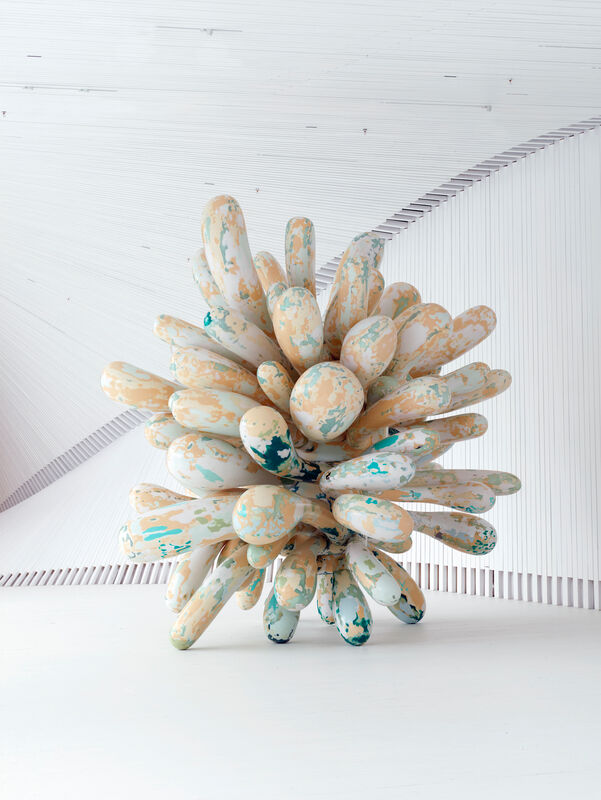

As part of our magazine, we talk to people from the art and culture scene who have a special relationship with Düsseldorf. In addition to exciting impressions and personal stories, our interview partners show the complexity of Düsseldorf and its diverse institutions.
Felix Krämer talks about the newly renovated Kunstpalast.
The Kunstpalast unquestionably stands as an integral part of the Düsseldorf art scene. Renowned for its opulent and media-effective exhibitions, this vibrant art institution now reveals itself anew following extensive construction and renovation efforts. Under the stewardship of German-British art historian Felix Krämer, the Kunstpalast has successfully introduced fresh and creative impulses. In an exclusive interview, Krämer discussed the revamping of the collection, his journey in the art world, and an upcoming exhibition that encourages tactile engagement with the artworks with us.
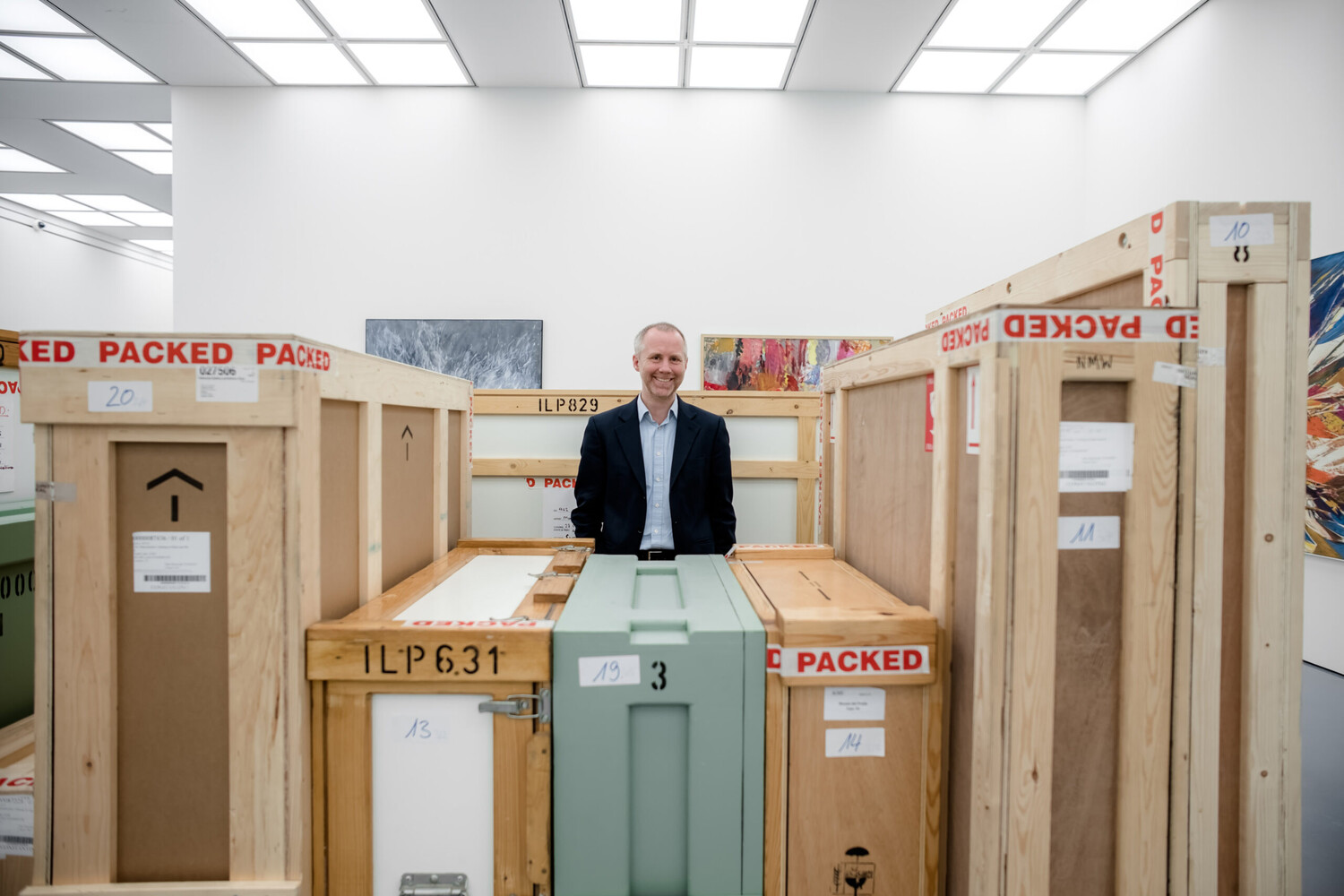
General Director and Artistic Director of the Museum Kunstpalast Foundation in Düsseldorf.
Photo Hartmut Bühler
The Kunstpalast has just undergone a major transformation. After three years, the opening of the new collection was celebrated last November. What has happened in those three years? How did you experience this process and how do you experience the new Kunstpalast now?
When I took over the house in 2017, there was an urgent need for renovation. Something had to be done! Thanks to the generous support from the City of Düsseldorf, we were able not only to renovate the bare essentials here and there, but also to completely redesign the 5,000 m² collection tour, both in terms of space and content. A great gift for which I am extremely grateful. We were able to rethink the Kunstpalast and realize the vision of a contemporary, open museum in which everyone – regardless of age and art-historical background – feels at home.
Following extensive conversion, renovation and modernization work, the museum’s collection now presents itself in a completely new light. When I look at the new Kunstpalast and take a tour myself, I can say that the idea of appealing not only to the traditional museum audience, but also to people who have had little or no contact with art and museums in the past, is a success. However, this is not a closed process. We have to keep moving by always being open to new mediation formats and putting ourselves in our visitors’ shoes. If an app with AR features makes it easier to access exhibitions – especially for younger people – then there should be an app like the one we have developed together with our digital partner ERGO. If children are dragged through a museum, being bored because there is nothing for them to do, perhaps a dedicated audio tour, such as the one we offer thanks to a cooperation with Tonies, is a solution. Museums can be places of education, but a visit can also simply be fun!
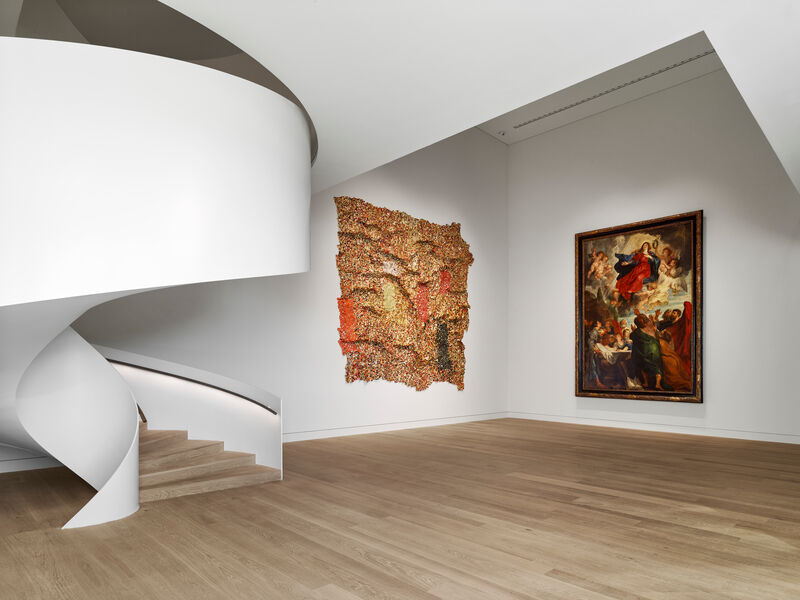
View of the New Collection Rooms, Kunstpalast Düsseldorf. Photo: © Stefan Müller
The collection brings together diverse artistic positions from several centuries – from the Renaissance to Modernism. You are showing a Rubens next to a work by the contemporary Ghanaian sculptor El Anatsui. What is this contrast of old and new all about?
The new tour of the collection is actually structured chronologically and spans from the art of the Middle Ages to art of the 19th Century up to contemporary art. The Bronner Hall, in which Rubens meets El Anatsui, is therefore an exception. While the other rooms contrast works that were created at the same time – albeit free of stylistic categorization and regardless of their origin – old and new meet here.
What are (currently) your personal favorite works in the collection?
The earth cloth by El Anatsui is actually one of my favorite works in the current presentation. The work literally stands for an interwoven world history, which we also depict in our presentation. El Anatsui draws attention to the entanglements between Africa, Europe and America. Since the 16th Century, rulers of the respective continents have been involved in the slave trade and the African participants were often paid in alcohol. By reusing thousands of bottle tops, Anatsui links this look back into history with issues of modern society: the work raises questions about consumption, trade and the environment. El Anatsui has experienced a meteoric rise in recent years – his work is currently being exhibited around the world and we are overjoyed to have an early major work in our collection. You will hardly find a work like this in any other public collection internationally.
Another work that I love very much is a painting by Merrill Wagner. Her name meant nothing to me a few years ago, when I came across the large-format painting by the American artist in the Konrad Fischer Gallery in Düsseldorf. As with so many great female painters of her generation – Wagner was born in 1935 – art history has taken a long time to recognize her significance. It is therefore all the more gratifying not only to have made the discovery, but also to be able to bring the work into our collection permanently and give the artist a stage.
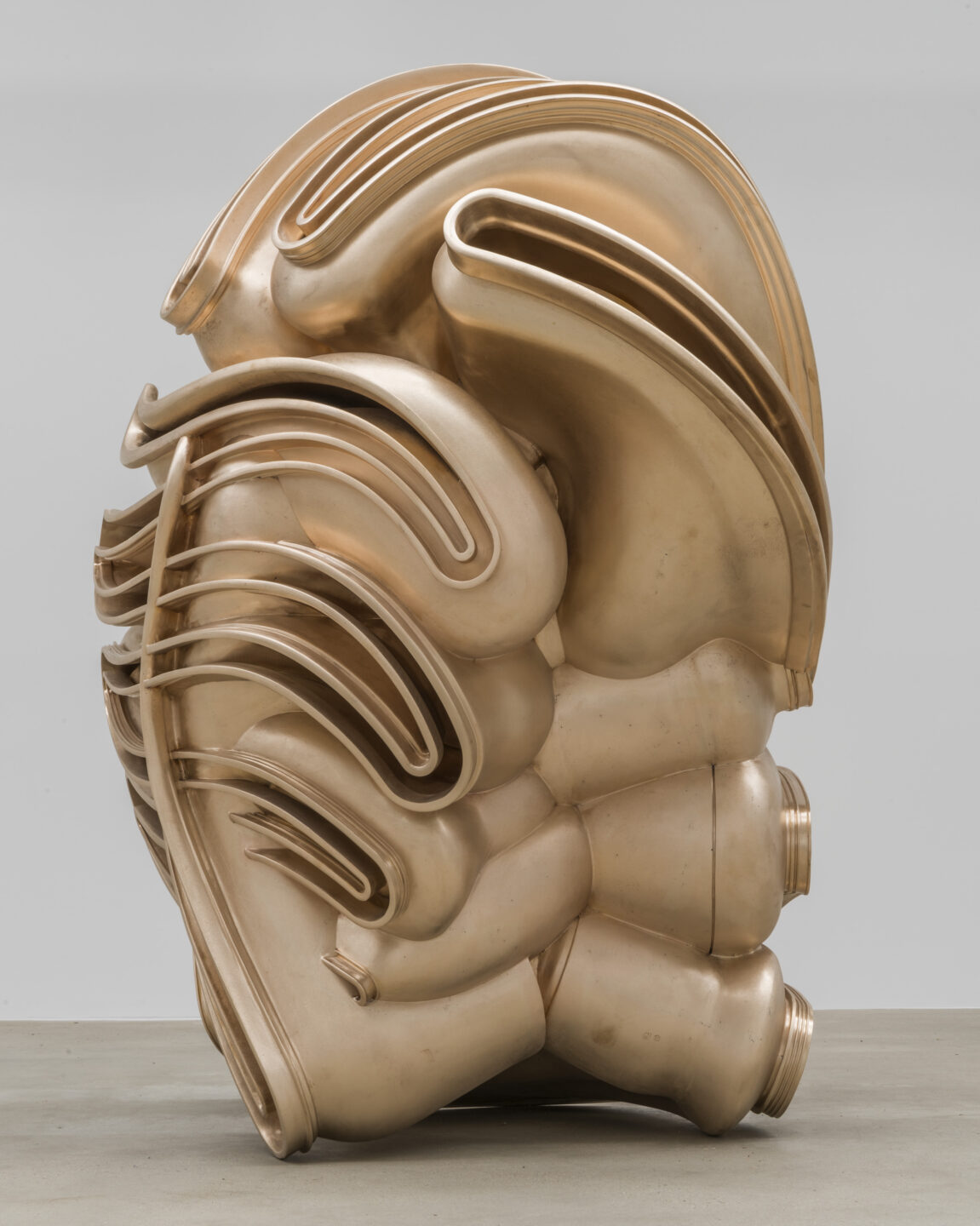
Tony Cragg, Migrant, 2015, Bronze, 220 cm x 150 cm x 147 cm, © Tony Cragg / VG Bild-Kunst, Bonn, 2024.
Photo: Charles Duprat
After working in Hamburg and Frankfurt, you have been the General Director of the Kunstpalast since 2017 and your contract was recently extended until 2034. Can you tell us about your path into the art world and your future plans for the Kunstpalast? How will your museum continue to develop as an integral part of the Düsseldorf art scene?
My father was a photographer, my mother a ballet dancer. So the art world wasn’t completely foreign to me from the very beginning. The fact that my path has led me exactly to where I am now makes me very happy and I still have a lot planned at the Kunstpalast. The long-term contract extension, which I see as a wonderful sign of the city’s confidence in our work, gives us the necessary framework. We will remain true to our line: The program will remain colorful and varied in the coming years. The interest shown by visitors confirms that we are on the right path. Our friends’ association is growing from month to month and also gives us a lot of support. It’s great to see how many people in Düsseldorf and the surrounding area identify with the Kunstpalast and also want to get actively involved and give us valuable feedback.
In addition to the new collection presentation, the Kunstpalast is bringing the legendary Düsseldorf underground club “Creamcheese” back to life. How is this former hotspot of the art and music scene anchored in the new museum? How did this reference to the 60s and 70s come about?
After the closure of the original Creamcheese, the Kunstpalast acquired its artistic interior in 1978. This is therefore part of our collection and the reconstruction of the bar area with the original works by Günther Uecker, Gerhard Richter, Daniel Spoerri and other artists exhibited there at the time can be seen during regular opening hours as part of the tour. On Fridays and Saturdays, the Creamcheese room with drinks and music from the 1960s and 1970s also invites visitors to linger until late in the evening.
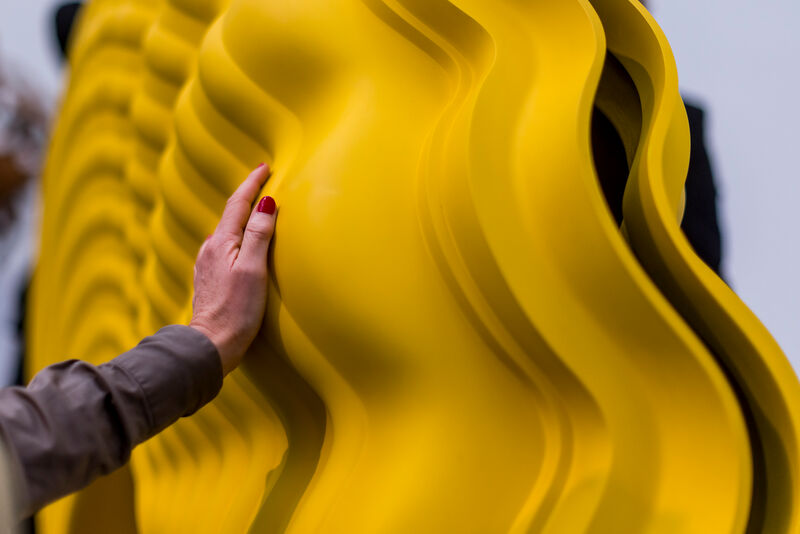
Tony Cragg: exhibition view, 2024, Kunstpalast Düsseldorf.
Photo: Anne Orthen
And now the recently opened “Tony Cragg. Please Touch!” Compared to other exhibitions, it is unusual that visitors are allowed and encouraged to touch the sculptures directly. How did the idea for this exhibition come about? Have there already been any initial reactions from visitors to the new, physical experience of art?
There is hardly anyone who does not want to touch Tony Cragg’s sculptures. There are good reasons why this is not normally possible in a museum: It is our job to preserve works of art for future generations. But touching leaves traces and damage through abrasion or chemical reactions. The sculptures shown in Please touch! come directly from the artist and will be reworked by Tony Cragg after the exhibition. It is only thanks to his extraordinary commitment that this special form of presentation is possible. The starting point was an observation I make again and again when I visit collectors of Cragg’s sculptures: they touch the works as they show them to me. The concept of this exhibition enables an intensive physical encounter with the works – a “grasping” in both senses of the word. Perception through touch is central to us humans and the reactions of our visitors, who record their thanks for this extraordinary experience in our guestbook, for example, or let us know how enthusiastic they are via social media or letters, confirm my decision to embark on this experiment that Tony Cragg and the Kunstpalast have took on here. I have never seen so many happy people in one exhibition!
Don’t miss this unique opportunity to experience art with all your senses: The exhibition “Tony Cragg. Please Touch!”, which was jointly developed by Tony Cragg and Felix Krämer, allows you to actively experience the artworks and can be seen at the Kunstpalast in Düsseldorf from February 22 to May 26, 2024.